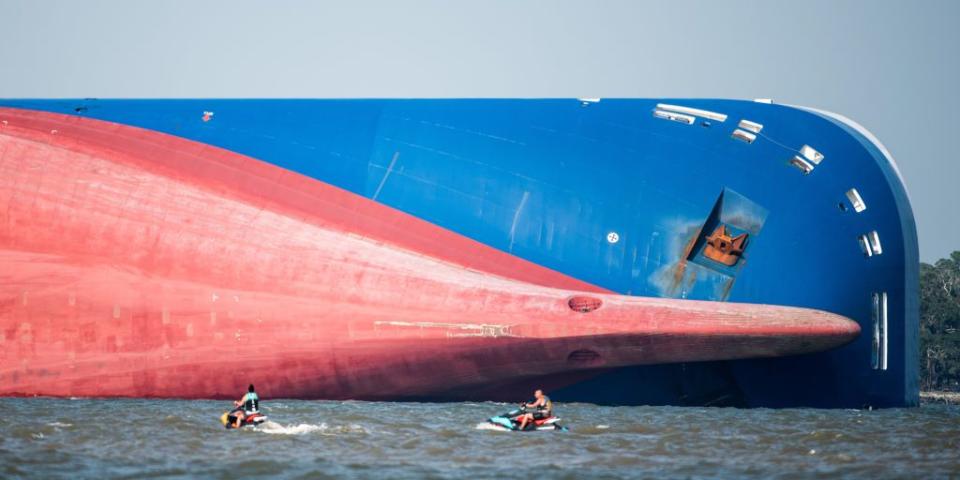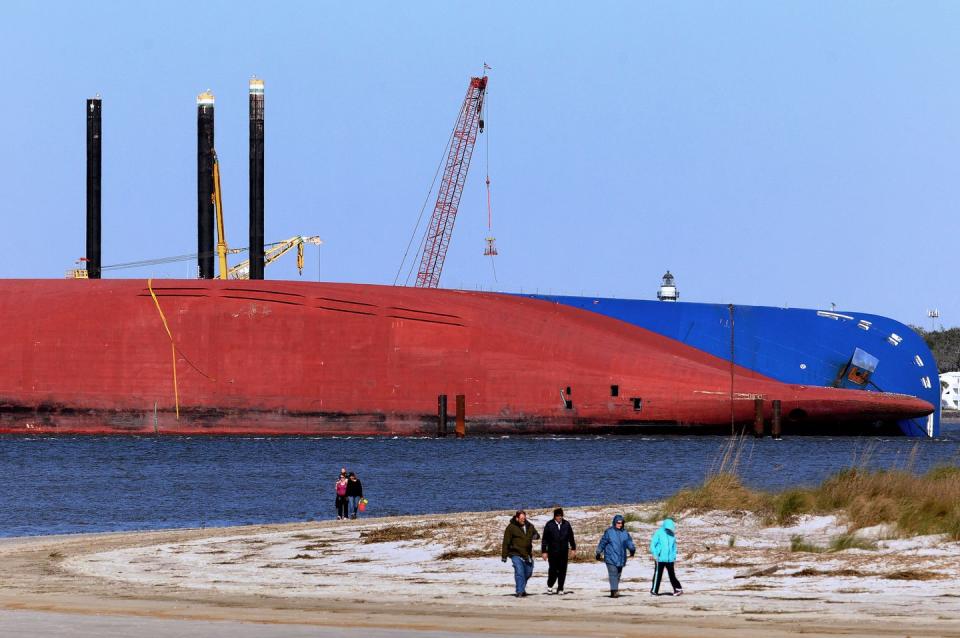Removing a Capsized Cargo Ship: Pretty Hard!

After six months, the wrecked Golden Ray is finally being enclosed and then sliced up for removal.
This shipwreck is unusual compared to others because it's a gigantic ship in extremely shallow waters.
Crews have removed all remaining oil and the ship's heavy rudder to reduce structural stress.
Experts and salvagers are making a plan to slice up a 656-foot cargo ship that crashed in an inland waterway in Georgia. The ship was carrying over 4,000 brand new cars, and authorities haven't yet disclosed the cause of the crash in September 2019.
In Georgia, the port of Brunswick is a major hub where overland cargo (like tractor trailers) meets oversea cargo on container and other transport ships. The MV Golden Ray (MV stands for merchant vessel) left Brunswick with 4,200 Hyundai and Kia vehicles on board. An average new car in 2010 weighed about 4,000 pounds, so the gigantic ship had about 16 million pounds, or about 8,000 tons, of cars on board.
The ship was just two years old, flying a flag of convenience from the Marshall Islands. In September, the Golden Ray left port on its way to Baltimore on a route through St. Simons Sound. A sound is a narrow, inland-pointing arm of ocean often made by the ocean flooding a riverbed, like a delta without the mingling and silt. St. Simons Sound has an estimated maximum overall depth of 32 feet—think of this number like the minimum height for a highway, including low bridges—with a jagged, sharp, rocky bottom. The Golden Ray has a draft, or depth from waterline to keel bottom when the ship is fully loaded, of over 31 feet.

So this was always going to be a tight squeeze, even on a good day. Even waterways with heavy traffic often have one main shipping lane that’s kept as neat as possible with maintenance and dredging. Outside of that lane, it’s usually shallower, with debris mixed in with whatever mud or rocks are on the bottom. When the Golden Ray began to list (fill and tip) at 1:30 a.m., a quick-thinking Port of Brunswick official guided it so that the ship grounded on its side outside the vital shipping lane. All of the crew members were rescued.
Now, for nearly six months, this 25,000-ton ship has been an island in the St. Simons Sound. It’s leaked enough oil to cover 25 miles of waterway coast near the sound, and local groups have tried to stanch the flow. The time is well overdue to remove the ship—but how do you remove a 600-foot ship that’s grounded in shallow inland waters? The process is long enough that officials brought in thousands of tons of loose large rocks to pack around the ship to make it more stable while they planned for removal.
By December, crews had removed over 300,000 gallons of oil that remained inside the ship. They also used torches to cut the rudder and propeller off to further reduce ungainly weight and stress on the structure. The enormous size of the ship, plus the fact it has the chemically active remains of 4,200 cars inside (including gas and batteries!), has added a degree of difficulty.
Now, the plan is to build a barrier around the ship and then use pairs of ships equipped with either end of a massive industrial cable saw to “slice the ship like a gigantic, semi-submerged loaf of bread,” NPR reports. It’s a huge undertaking, literally, but the most worrisome part of the wreck was the 300,000 gallons of fuel, and now that that’s been safely removed, the rest is fairly contained.
You Might Also Like

